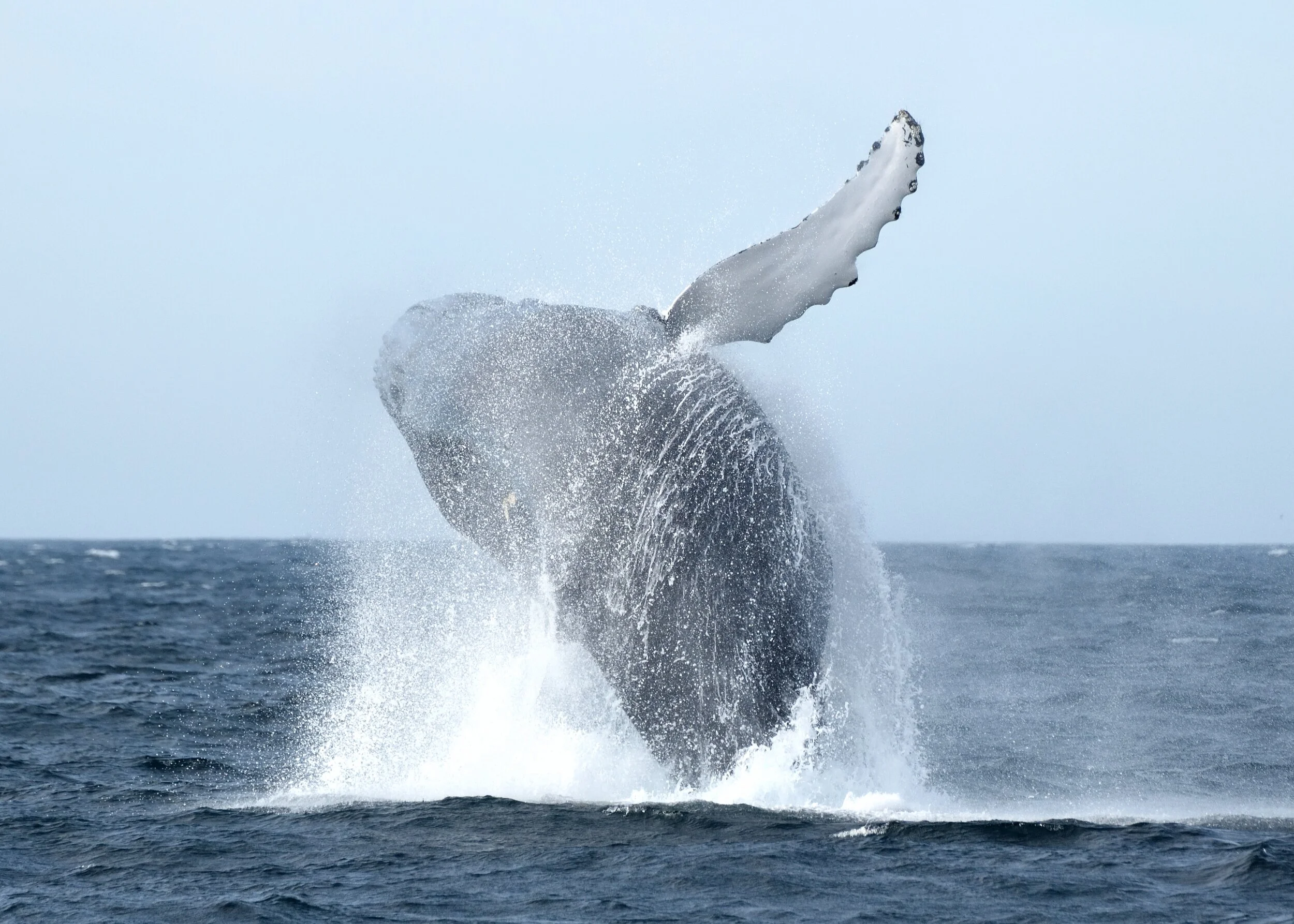Gaining a better understanding of the seas through citizen science
By Erica Cirino, Safina Center Launchpad Fellow
Whale watching. Photo: Carl Safina
Twice a day, every day, Kera Mathes hops aboard a ship that sets off from Long Beach Harbor in California. As education specialist at the Long Beach Aquarium of the Pacific, she helps visitors aboard the ship identify the animals they see. Mathes also supervises the aquarium’s interns (college students and recent graduates), as they collect data and photograph the same creatures. Their information on blue and fin whales goes to the Cascadia Research Collective, an oceanic education and research organization. But for years the interns’ data—weather, time, position, and photos of every sea creature they observe—went unused. Mathes needed a way to share and use such valuable information.
So several years ago she decided to reach out to see if any other research organizations would be interested in the data and images of the other cetaceans. Mathes was in luck: Several researchers—including those at the National Oceanic and Atmospheric Administration—were interested in materials on cetaceans other than blue and fin whales. But there was a catch: first Mathes needed to organize the data and identify the cetaceans in the photographs.
That’s when Mathes says she turned to the public for help. Today, so-called “citizen scientists” can help identify the cetaceans in the images she and her interns collect on their ocean cruises so that scientists can translate the images into data for use in ocean conservation. Any member of the public (no science degree or training needed) who commits to helping Mathes four hours a week for at least three months can be a part of her program.
Mathes’ cetacean-identification project at the Long Beach Aquarium of the Pacific is just one of many ocean-related citizen science projects now underway in the U.S. Today people from all kinds of backgrounds donate their time to help trained scientists conduct research they wouldn’t otherwise be able to do—due to time, staffing, financial, or other restrictions.
The concept of citizen science has been around for centuries. Major scientific achievements, including Carl Linnaeus’ famous species classification system, wouldn’t have been possible without the help of citizen scientists. But the trend of “amateur” scientists contributing to research has become increasingly popular in recent years, as new technologies have made it easier than ever before for the public to contribute to scientific research.
Just this year the U.S. government launched citizenscience.gov, a new website designed to engage the public in all types of citizen science projects. On it, the public can find 300-plus federal science projects to join in on.
Apps also make it easy for the public to get involved in science. From today to the 24th, the U.S. Department of State will host more than 2,000 coders in more than 40 cities across the nation to brainstorm ways to harness mobile technologies to help confront the world’s most pressing ocean issues, such as overfishing—dubbed the “Fishackathon.”
Marine conservation group Ocean Sanctuaries is currently conducting several citizen science projects, many of which are run through apps. These include a species-identification project similar to that Mathes runs at the Long Beach Aquarium of the Pacific (naming sharks instead of cetaceans.)
Safina Center Fellow and marine scientist Dr. Ellen Prager says this trend is a positive one: “Through citizen science projects more people than ever before are getting involved in actually doing science, collecting data, and being part of the very process of trying to better understand the ocean and the world we live in.”

